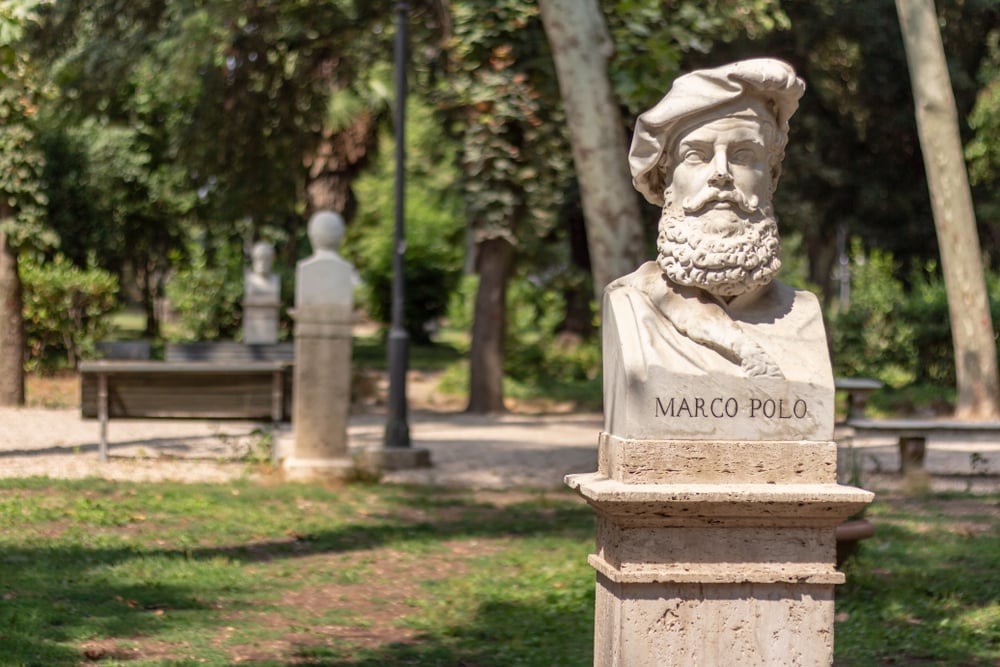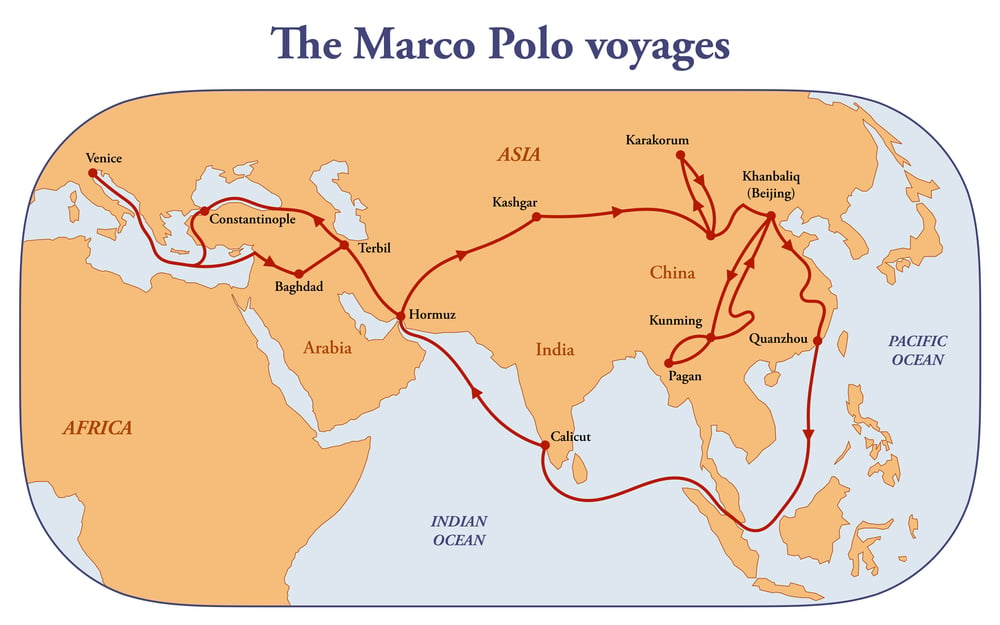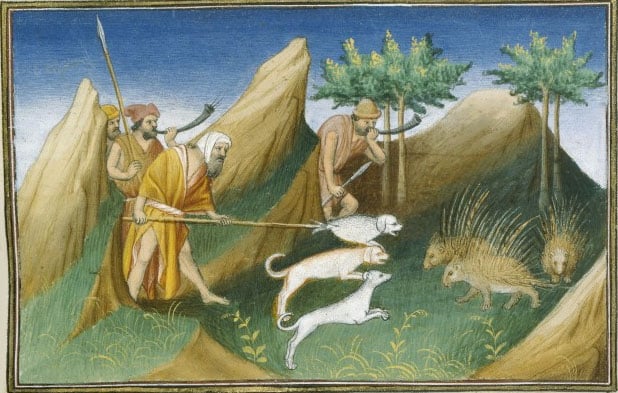Table of Contents (click to expand)
Marco Polo earned a prominent spot in history because his storytelling prowess in “The Travels of Marco Polo” captivated the minds of Europe.
Marco Polo, the Venetian explorer, is often celebrated as the first European merchant to explore China. His adventures in the 13th century are immortalized in his famous book, “The Travels of Marco Polo”. However, it is a common misconception that he was the first European to set foot in China. While Marco Polo’s travels were undoubtedly significant, acknowledging the explorers who preceded him is essential for a more accurate understanding of Europe’s interactions with China.

Recommended Video for you:
Predecessors To Marco Polo
Historical records suggest that a Roman envoy, possibly sent by Emperor Marcus Aurelius, arrived in China in 166 A.D. This early contact between Europe and China predates Marco Polo by over a millennium.
Furthermore, archaeological evidence hints at the presence of Greek artisans in China as early as the 3rd century BC. These artisans may have been involved in training local craftsmen and influencing Chinese art and culture.
Before Marco Polo embarked on his journey to the East, several Europeans had already ventured into China. One notable example is Rabban Bar Sauma, a Nestorian Christian monk from the Mongol Empire.
In the 13th century, he traveled westward to Europe, visiting European courts, including those of the Pope and various European monarchs. His travels predated Polo’s expedition to China, demonstrating that European interaction with China was far richer and more extensive than is widely known.

John of Montecorvino, an Italian Franciscan missionary, is another example. He arrived in China in the late 13th century, decades before Marco Polo’s travels.
John played a significant role in spreading Christianity in China and established churches in various Chinese cities. His presence in China showcases earlier European involvement in the region.
Similarly, William of Rubruck, a Flemish Franciscan friar, embarked on extensive travels in the Mongol Empire, including parts of China, in the mid-13th century. He documented his journey and encounters with both Mongols and the Chinese.
Marco Polo’s Extraordinary Journey
Marco Polo’s own journey to China was nothing short of extraordinary. Born in 1254 into a family of Venetian merchants, Marco was exposed to the world of trade and commerce from a young age. His father, Niccolò Polo, and uncle, Maffeo Polo, had established a successful trading business in the Mediterranean and the Black Sea.
In 1271, at the age of around 17, Marco Polo embarked on his first journey to the East with his father and uncle. Their initial destination was the Mongol court, ruled by Kublai Khan, the founder of the Yuan Dynasty in China. The Polo family traversed a diverse array of regions, from eastern Turkey to Tabriz (in modern-day Iran), and through parts of Afghanistan, before reaching the Mongol court in 1275.

During their stay in China, specifically in Dadu (now Beijing), Marco Polo and his family engaged in diplomatic and commercial activities on behalf of Kublai Khan. Despite initially knowing little to no Chinese, Marco adapted by learning languages such as Uygur, Turkish, and Mongol, which enabled him to navigate various regions of the vast empire.
Marco’s role in Kublai Khan’s court extended beyond diplomacy. He was appointed as an ambassador and tasked with exploring and administering to distant lands within the Mongol Empire. On these missions, Polo documented his travels, providing detailed accounts of areas in China, including Yunnan, as well as regions as far-reaching as India, Burma, and Sumatra.
Around 1292, the Polo family sought release from Kublai Khan’s service as the aging emperor’s rule waned. They finally made their way back to Venice in 1295.
Marco Polo’s Influence And Contributions
While Marco Polo was not the first European in China, his experiences and writings had a profound impact on European knowledge and perceptions of the country. “The Travels of Marco Polo,” which he dictated during his imprisonment in Genoa after being captured during the Venetian-Genoese War, became a significant literary work of his time.
In his book, Marco Polo described the economic power of China, its cities, landscapes, and people in remarkable detail. His descriptions included fascinating aspects of Chinese culture, such as the use of paper money, intricate postal systems, and advanced technologies, like eyeglasses. These details and advancements were largely unknown in Europe at the time and piqued the curiosity of countless readers.

One of the most influential aspects of Marco Polo’s writing was his introduction of paper money to Europe. He marveled at how the Chinese used pieces of paper for transactions, and his descriptions contributed to the eventual adoption of paper money in Europe.
Furthermore, Marco Polo’s writings inspired future explorers and adventurers, such as Christopher Columbus. When Columbus set sail in 1492 in search of a sea route to China, he was inspired by his then heavily annotated copy of “The Travels of Marco Polo”.
Conclusion
While Marco Polo’s remarkable journey to China is undeniably a fascinating chapter in the history of exploration, it is crucial to dispel the misconception that he was the first European to set foot in China.
Marco Polo’s contributions, however, should not be diminished. His detailed accounts provided Europe with a window into the richness of Chinese culture, technology, and trade. He introduced concepts like paper money, eyeglasses, and advanced postal systems that would eventually shape aspects of European society. Moreover, Marco Polo’s writings ignited the flames of curiosity and exploration in subsequent generations of adventurers.

Acknowledging the presence of earlier European travelers in China and the complex web of interactions between East and West serves to enrich our understanding of history. It reminds us that exploration and cultural exchange have been woven into the fabric of human civilization for centuries, transcending boundaries and inspiring generations.
In celebrating the legacy of Marco Polo and those who came before him, we honor the spirit of curiosity and discovery that continues to drive humanity forward. While the myth of “first contact” may be dispelled, the enduring legacy of these early explorers remains an enduring testament to the power of human exploration and the inherent interconnectedness of our world.













